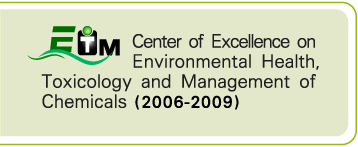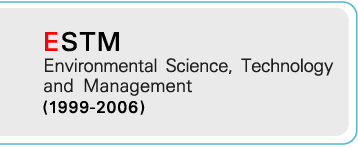|
A cross-sectional study was conducted from March to December, 2009. The exposure concentrations of 60 bus drivers and 60 bus conductors of fine particles (PM2.5), respirable particles (PM10), volatile organic compounds (VOCs) and the level of carbon dioxide (CO2), carbon monoxide (CO), temperature, and relative humidity were monitored for full shifts in air-conditioned and non air-conditioned buses on routes X, Y and Z of the Bangkok Mass Transit Authority. The subjects were also interviewed regarding health symptoms. The results reveal that the overall average PM2.5 exposure concentrations among the non air-conditioned bus drivers (323.81 ug/m3) was significantly higher from those of air-conditioned bus drivers (206.46 ug/m3) at p-value = 0.016. The overall average PM10 exposure concentrations among the non air-conditioned bus drivers (660 ug/m3) was not significantly different from those of air-conditioned bus drivers (550 ug/m3) at p-value = 0.209. The average benzene, toluene and xylene exposure concentrations were 429.15, 225.11, 127.60 ug/m3 for bus drivers and 409.88, 222.47, 103.04 ug/m3 for bus conductors, respectively in non air-conditioned buses. The average CO2 levels in air-conditioned buses were significantly higher than those in non air-conditioned buses (p < 0.001). The CO levels in non air-conditioned buses were significantly higher than those in air-conditioned buses (p = 0.037). The overall temperatures inside air-conditioned buses were significantly lower than those in non air-conditioned buses (p < 0.001). The overall relative humidity inside air-conditioned buses was not significantly different from that inside non-air-conditioned buses (p = 0.443). The cancer risk of bus drivers’ exposure to benzene was 1.5x10-4 and 2.1×10-4 for air-conditioned and non air-conditioned buses, respectively. The cancer risk of bus conductor was the same (2.2×10-4) for air-conditioned and non air-conditioned buses. Regarding health symptoms, the risk of bus drivers and conductors in non air-conditioned buses developing stuffy nose and sore throat was 2.38 and 5.18 times those in air-conditioned buses. The adjusted odds ratio with %CI was 2.24(1.05-4.77) for cough, 2.81(1.31-6.07) for phlegm and 2.39(1.02-5.63) for headache. Among the bus drivers studied, the top three musculoskeletal pains reported after work were neck (58.30%), left shoulder (56.70%), and right calf (36.70%). The top three reported symptoms of bus conductors were neck (55.00%), right calf (38.30%) and left calf (35.00%). แหล่งข้อมูล:
|
 Center of Excellence on Environmental Health and Toxicology (EHT)
Center of Excellence on Environmental Health and Toxicology (EHT)










